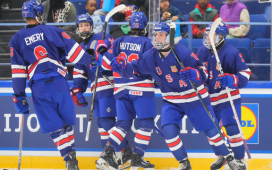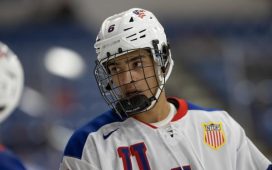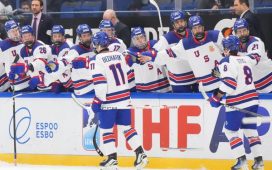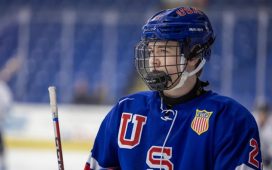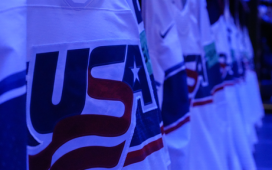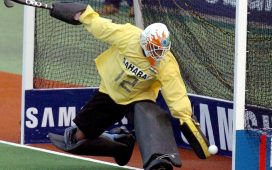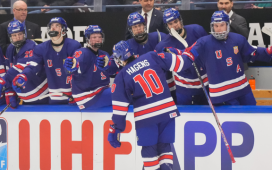We know that the billionaires won’t be crossing swords with the millionaires for at least six more years. We know we’ll be seeing NHLers at the Olympics. What we don’t know is how much damage the global pandemic is going to do to the hockey industry.
If there’s one underlying theme to the collective bargaining agreement that will ensure labor peace in the NHL for at least the next six seasons, it’s certainty. And when you’re in the throes of a worldwide pandemic that has thrown almost everything you’ve ever known into disarray, that’s a precious commodity.
There are some aspects of this deal that the owners will not particularly like. And there are a lot more reasons for the players to dislike this agreement even more. But both of them held their noses and approved it because, in reality, they had almost no choice. So the next time you get caught up in putting a pox on both their houses for being greedy, pigheaded and shortsighted, remember today. Because both the owners and the players did an imperfect deal in order to save their league.
But back to the certainty factor. The owners continue to have it when it comes to player costs, now more than ever. The salary cap will remain flat at $81.5 million next season and likely won’t rise much beyond that through the life of this deal. The players, meanwhile, know exactly how much they’ll be paying in escrow for this season and each of the next six, so there’s that. And fans can go to sleep tonight knowing they won’t have to worry about billionaires battling millionaires for at least the next 2,258 days. And they’ll also have the comfort of knowing that they’ll be able to watch the ultimate best-on-best tournament in 2022 and 2026 with the NHL returning to the Olympics.
If you’re a player, you’re probably celebrating the fact that the cap will not decrease and that there will still be a market, albeit a more restricted one, for players who are looking for contracts. But the reality is that there is nothing about this deal that changes one iota when it comes to the players’ problems with escrow. Those who think something has been done about it might be able to convince themselves that’s the case, but the reality is it’s a shell game and the shells have just moved.
Here’s why. Since the NHL introduced the salary cap in 2005, the goal of the NHL Players’ Association has been to push the cap to the highest possible limit, which is why they so often triggered the five percent inflator that is not part of this deal. This created a high cap ceiling and high escrow payments. The players might rejoice in the fact that the escrow payments will be just six percent in each of the last three years of the deal, but now they’ll have to deal with the reality that there will be less money in the system. Even if revenues go up, the cap will probably not rise significantly. That means less escrow and less money for players looking for new deals.
So the player who now makes $1 million a season and pays 20 percent escrow will probably sign a new deal making somewhere in the $800,000 range and a much lower escrow and think he’s come out ahead when he actually hasn’t. The bottom line is the players profess to hate the escrow system, but it’s actually the hard cap system, which hasn’t changed one bit, that leads to the escrow they so despise.
This deal has accomplished a couple of things. It has avoided two years of turf wars, which would have led to the mother of all lockouts in 2022. And it also gives the NHL and the players time to get the league back on solid financial footing, giving the players the opportunity to pay back what they owe spread over six seasons and the owners a chance to have some cash flow. Without this deal, there would have been chaos with players being bought out and edged out of the game as the teams adjusted to a much lower cap. That’s the reality when a $5 billion business becomes a $3.8 billion business as it did this year. And if you think that’s bad, it could be even worse next season. Taking into account the 14 percent the players have already paid in escrow, plus the fact that they won’t collect their last paychecks, this year’s escrow rate is 19.55 percent. It will be 20 percent next season, between 14 and 18 percent in 2021-22, 10 percent in ’22-23 and six percent in the final three years of the deal. Again, for the players, it’s at least the devil you know.
It will be very interesting to see what effect this has on rosters. You can be sure that pending unrestricted free agents such as Taylor Hall and Alex Pietrangelo will either take short-term deals and re-enter the market in a couple of years or take long-term contracts that are back-loaded instead of front-loaded. For the star players coming out entry-level deals, you’re likely to see even more bridge deals than before.
Meanwhile, the NHL is hoping it can get to a point where revenues will start growing again. A new U.S. television deal is on the horizon and there’s the hope of a vaccine that will allow people to go to games again. But when will that be? As it stands, we don’t even know whether the NHL will be able successful in their attempts to finish this season and we have even less idea of how next season will look. But with this deal, at least the owners, fans and players will have some predictability to cling to in some of the most uncertain and chaotic times in the game’s history.
Want more in-depth features, analysis and an All-Access pass to the latest content? Subscribe to The Hockey News magazine.

